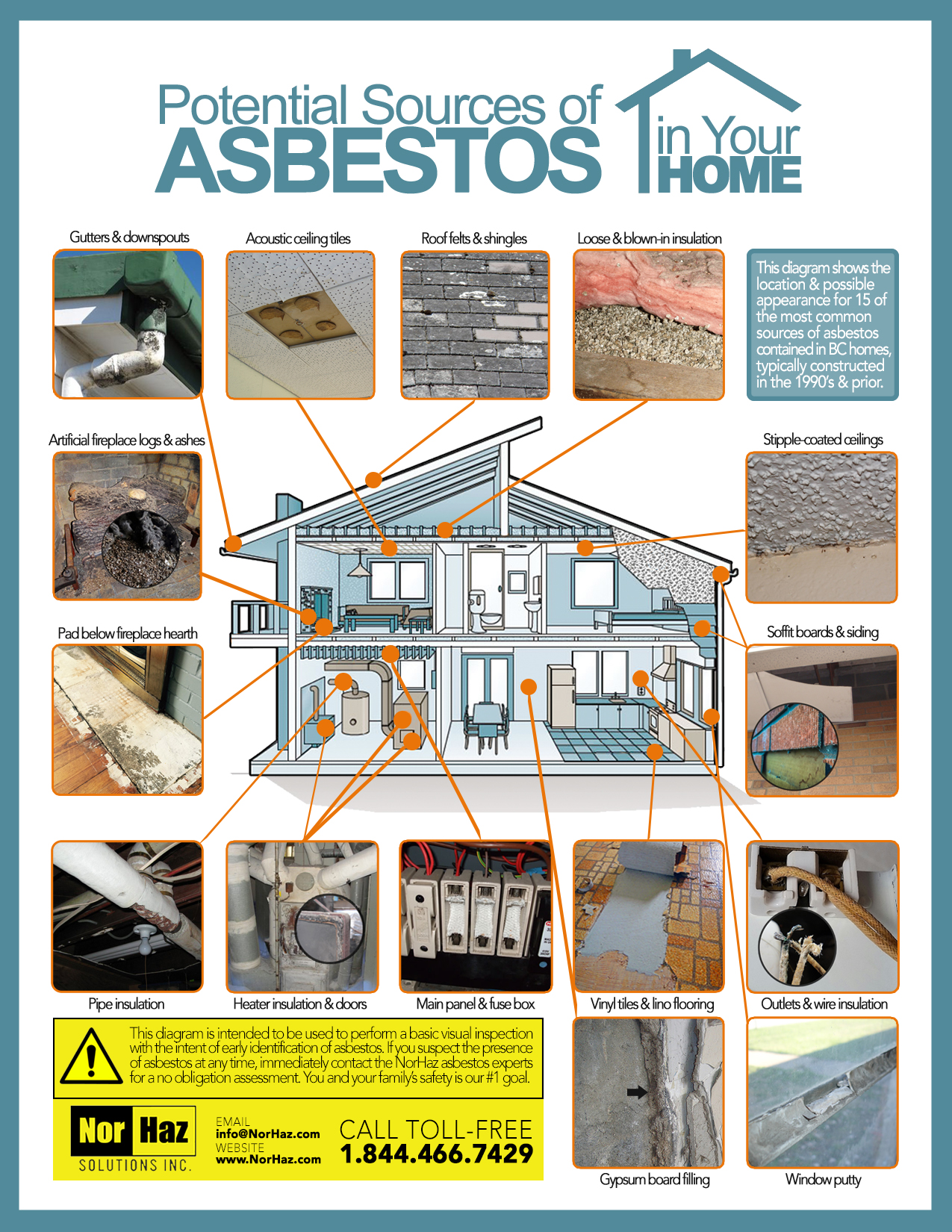Asbestos in the Home
Planning
a reno or demo
on a
home built before 1990?
Asbestos in the Home: Planning for Renovation or Demolition
Are you planning a renovation or demolition in a home built before 1990? You have a responsibility to check for the presence of asbestos in construction materials used around your house. Prior to 1990, WorksafeBC estimates there were approximately 3,000 building materials that somehow incorporated asbestos, often hidden in plain sight.
To book a free consultation with a member of our Asbestos Extraction Team now, call toll-free 1-844-466-7429.
Conducting a
Visual Inspection

Potential Sources
of
Asbestos in the Home
(typically pre-1990’s construction)
Most Common Sources
- Loose, blow-in insulation – especially older forms of vermiculite insulation
- Flooring – vinyl tiles and linoleum sheet flooring as well as flooring adhesive
Moderately Common Sources
- Roof felt and shingles
- Roof gutters and down-pipes can be made of asbestos cement
- Asbestos can be found in stucco
- Soffit boards can be made of asbestos cement or asbestos insulating board
- Asbestos cement board siding and under sheeting
- Deck under-sheeting
- Incandescent light fixture backing
- Backing behind recessed lighting
- Acoustic tiles
- Textured ceilings and walls – spray-on popcorn/stipple-coated and sprayed acoustic tiles
- Vermiculite wall insulation
- Artificial fireplace logs and ashes
- Asbestos pad under the fireplace hearth
- Pipe insulation
- Insulation on electrical wires
- Main panel and fuse box – each fuse wire could an individual asbestos flash guard
- Outlets and switches
- Heat reflector for wood stove
- Furnace duct tape
- Furnace door and gasket covers
- Boiler and furnace insulation
- Gypsum board filling compound, and patching and joint compound for walls and ceilings
- Window putty
- Older appliances – Primarily pre-1980, possibly contained in water heaters, range hoods, clothes dryers, dishwashers, refrigerators, freezers, portable dishwashers, toasters, slow cookers and portable heaters
caution
Why is Vermiculite Removal or Abatement
Necessary?
Vermiculite removal/abatement procedures are especially important for older offices and homes. During the 1900’s, almost three-quarters of the world’s vermiculite used for both homes and buildings came from one mine in Montana, that was later found to have ore that contained dangerously high levels of tremolite asbestos.
Homes and commercial properties developed in the 1990’s and prior, were commonly insulated with vermiculite. It was easy to apply, had effective insulating properties and commonly used throughout Vancouver. Contaminated vermiculite removal services are an essential service that will remove this toxic material. For this reason, our staff is dedicated to ensuring you will live more comfortably and safer with quality vermiculite removal work.
